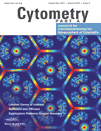|
Conclusion:
|
Our overarching aim for this study was to understand T-cell focused immune mechanism of Sustained unresponsiveness (SU) in desensitized participants following a period of allergen withdrawal. Using agnostic computer-based learning algorithms as well as hypothesis-based analyses from high dimensional immune studies, our findings suggest a pivotal role of CD8+ T cell differentiation status in defining the likelihood of SU. Our novel findings suggest that (i) lower frequency of terminally differentiated, CD57+ allergen-reactive, and allergen non-reactive CD8+ T cells, (ii) lower frequency of naïve CD8+ T cells, (iii) lower expression of CD86 on APCs and/or lower frequency of CD86+ APCs pre-OIT, and (iv) lower frequency of IFNg+ CD4+ memory Teffectors post-OIT favor SU.
|
|
Funding:
|
This work was supported by the National Institute of Allergy and Infectious Diseases (NIAID) under grants 5U19 AI104209-07, R01AI140134-01 and 5U01 AI140498-03, the Sean N Parker Center for Allergy and Asthma Research at Stanford University. Also, this work was partially supported by the National Institute of Health Grant P30-CA124435, Grant P30-DK116074, and Grant UL1-TR003142. Dr. Chinthrajah reports grants from NIAID, CoFAR, Aimmune, DBV Technologies, Astellas, Regeneron, Stanford Maternal and Child Health Research Institute (MCHRI), and FARE; Dr. Sindher reports grants from NIH, Regeneron, DBV, AIMMUNE, Novartis, CoFAR, and FARE. She receives personal fees from Astra Zeneca, DBV, and honoraria from FARE. Dr. Galli reports grants from the NIH; Dr. Boyd has consulted for Regeneron, Sanofi and Novartis on topics unrelated to this study, owns shares in AbCellera, has patents awarded or submitted related to immunoglobulin gene and protein analysis, and reports grants from the NIH; Dr. Andorf reports grants from the NIH. All other authors indicate no conflict of interest.
|

